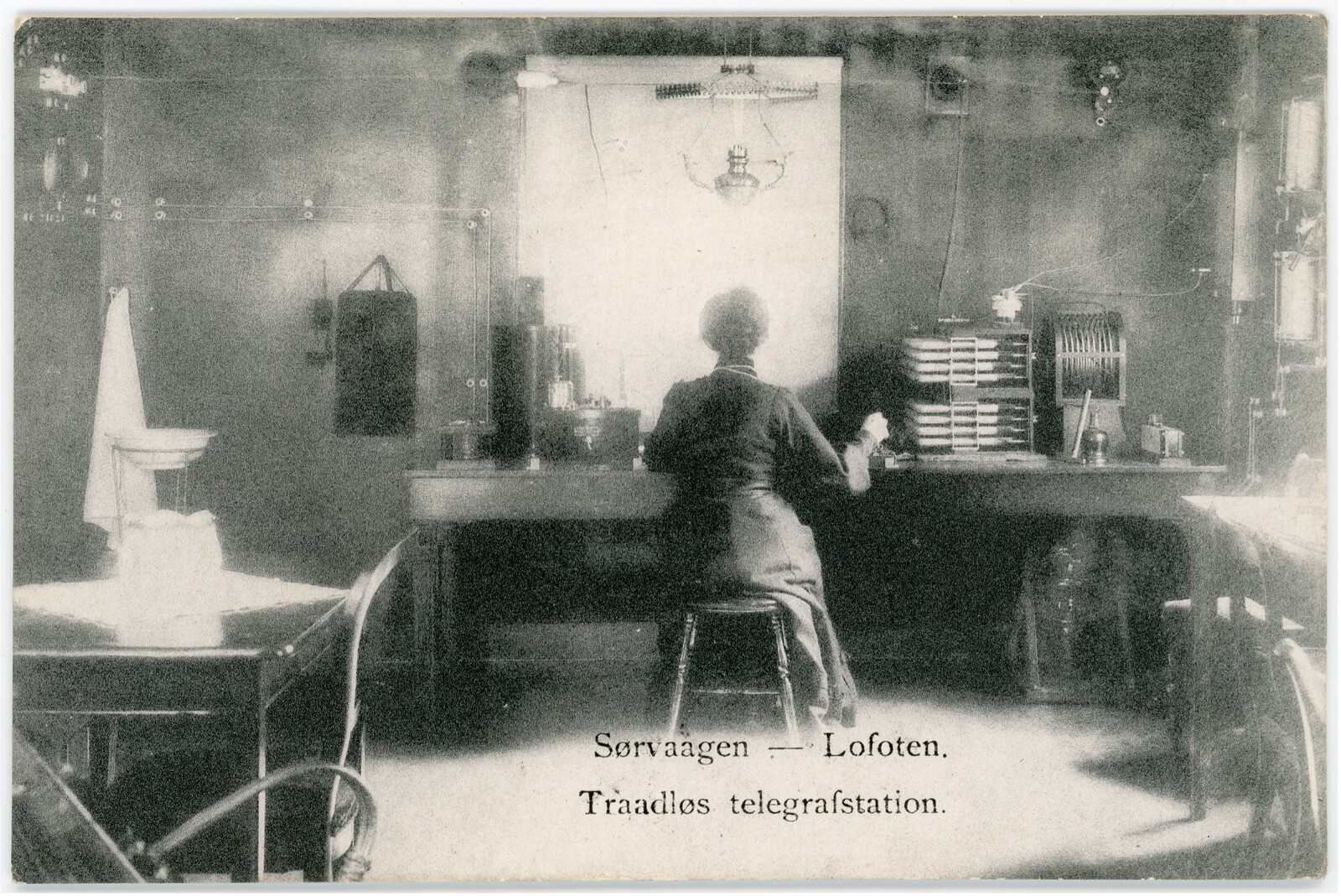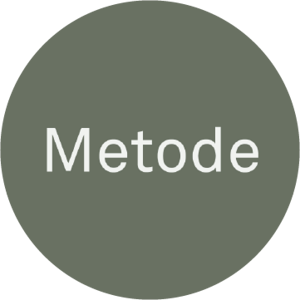In collaboration with Lofoten International Art Festival (LIAF) 2024.
A grainy black-and-white photograph by an unknown photographer shows a woman sitting on a stool with her back to the camera. She is sitting in front of a wooden desk, surrounded by a number of technological devices, antennae, radio transmitter and receiver, cables, and power lines. A kerosene lamp hangs above her and to her left is a wash basin on a stand. A caption on the photo says “Sørvaagen - Lofoten Wireless telegraph station.” The photograph belongs to Sør-Troms Museum and was once printed as a postcard.
In 1909, the Norwegian local newspaper Namdalens Blad published an enthusiastic article about the future of telecommunication. The journalist awaited the arrival of Nicola Tesla’s “wonderful new wireless telegraph system.” Wireless technology, the journalist explained, uses the air itself to allow the flow of electric currents in one or more directions. “With this new system,” the journalist predicted, “time and space will practically be overcome” (Namdalens Blad, 9. December, 1909).
Perhaps the journalist was unaware that the future had already arrived in Norway. Three years prior, a wireless telegraph system was installed in Sørvågen in the Lofoten archipelago—the second public radio telegraphy system in the world—as a part of a state-funded initiative for making the Lofoten fishery a safer, and more efficient industry. The first wireless message was sent through the air from the newly built wooden transmitter mast at Sørvågen to the radio mast at the neighbor island Røst.
The name “telegraph” is constructed from Ancient Greek meaning “writing at a distance.” As the Norwegian journalist rightly observed, the wireless telegraph system eliminated space as a communication constraint. The electrical currents caused an expanded conception of the current; instead of one-to-one communication through wires, the signals through air allowed distant places, like the Lofoten archipelago, to communicate concurrently—in one or more directions—with a global network. But the journalist’s future speculations have not yet been entirely fulfilled: How can signals be transmitted “from a far” in a way that overcome not only space but also time?
Throughout the 20th century, artists have often looked to the past to engage with contemporary concerns. During the last two decades, artists have increasingly engaged with local history, regionalist situatedness, peripheral areas, remote figures and events, and local material histories in order to explore the interdependency between local contexts and global entanglements—underpinned by a renewed interest in the relation between ethics and aesthetics.
Today, contemporary artists regenerate local, cultural, and natural heritage, seeking guidance and remedies for current and future challenges. Artists engage in the transmission of ethical signals concurrently through time and space—in one or more directions—from the current, through the local past, to change the global future.
How have artists, curators, philosophers, and art theorists used local heritage for current critiques? How can this tendency be historized and theorized? Which projects are forgotten forerunners in the arts-based turn to local heritage? How do contemporary art practices negotiate between art, cultural and/or natural heritage to provide ethical remedies for the challenges that lie ahead?
Keynote essays
Our four keynote writers for Currents are interdisciplinary artist and writer Kameelah Janan Rasheed (US), curator and writer Alison Burstein (US), writer Sigbjørn Skåden (Sápmi/Norway), and composer and scholar You Nakai (Japan). The keynote essays will be published during the opening weekend of LIAF 2024 (September 20–22). Editors of Currents are Kjersti Solbakken (curator of LIAF 24) and Ingrid Halland (editor-in-chief of Metode).
Submission / application
In order to apply to be a participant in Currents, submit either a full essay draft or a comprehensive project description for your essay by May 7, 2024 to metode [at] r-o-m.no. The full draft or project description should include sample visual material and a bibliography, and could be between 2000 and 5000 words.
Read the full open call and submission guidelines here. Metode vol. 1, ”Deep Surface” (2023) and vol. 2, “Being, Bathing, and Beyond” (2024).
*Images above: (1) TK (2) Left: The transmitter mast at Sørvågen radiotelegrafstasjon in 1906. Right: The transmitter mast at Røst radiotelegrafstasjon in 1906. Photos from Thorolf Rafto, Telegrafverkets historie 1855–1955 (Bergen: AS John Griegs Boktrykkeri, 1955), p. 360–361.(4) Double exposure effect in Virtual IEIE, from You Nakai’s keynote essay “IEIE, Reflected, Reflected” written for “Currents” (forthcoming September 2024).






